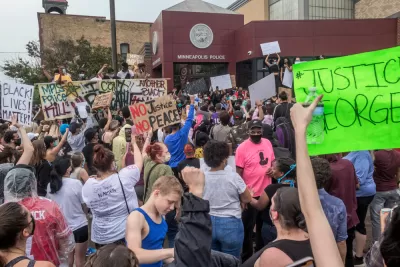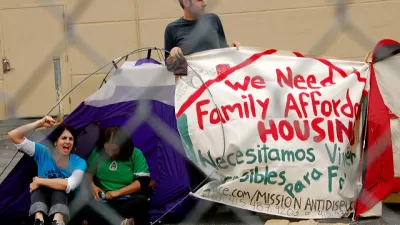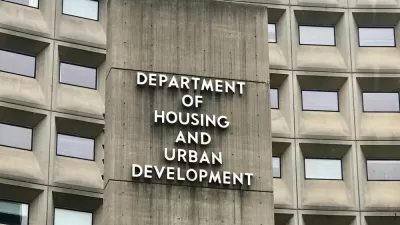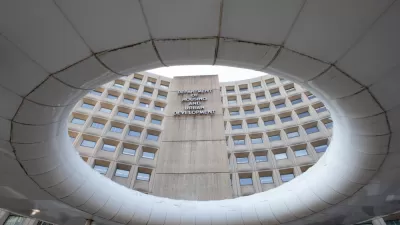The nation's fair housing policies are built on a foundation of assumptions that neglects the community and culture of low-income neighborhoods.

Edward G. Goetz, Anthony Damiano, and Rashad Williams explain the work of a coalition called Equity in Plan to shift the discussion about fair housing in the Twin Cities. According to the article, Equity in Place (EIP) has shifted the discussion about fair housing with a simple question: "Why do we think moving to white neighborhoods will solve our problems?"
The question has its roots in the fair housing battles surrounding disparate impact and affirmatively furthering fair housing, which attempt to overcome a history of discriminatory planning and development policies that concentrated public housing resources in areas of high poverty. EIP makes the case that the fair housing narrative neglects the communal and cultural identity of these neighborhoods.
"EIP first emerged in 2013, in response to the Metropolitan Council’s decennial regional plan, Thrive MSP 2040," according to the article. The regional plan was built on a "a Fair Housing Equity Assessment that, in accordance with HUD’s directives, emphasized the identification of both 'racially concentrated areas of poverty' (RCAPs, later amended by HUD to RECAPs—racially/ethnically concentrated areas of poverty) and 'high opportunity areas,'" according to the article.
EIP organizers created a three-pronged response: regarding narrative, EIP wanted to challenge the dominant storyline that portrays RECAPs as the central problem of regional equity; in policy terms, EIP wanted to challenge the dominant housing strategy that focused on moving people to “opportunity neighborhoods”; and, in political terms, the group demanded a place at the table for low-wealth communities of color when decisions about those communities are being made. Most fundamentally, EIP wanted to redefine regional equity in ways that include “building the economic, cultural, political, human and social capital of the places people of color already call home”
"Between 2013 and 2020, a central element of EIP’s work was investigating the unstated assumptions of this opportunity framework and expressing them in easily understood language," according the article.
A lot more detail on the fruits of that work is included in the source article.
FULL STORY: ‘Opportunity Areas’ Shouldn’t Just Be Places With A Lot of White People

Alabama: Trump Terminates Settlements for Black Communities Harmed By Raw Sewage
Trump deemed the landmark civil rights agreement “illegal DEI and environmental justice policy.”

Study: Maui’s Plan to Convert Vacation Rentals to Long-Term Housing Could Cause Nearly $1 Billion Economic Loss
The plan would reduce visitor accommodation by 25% resulting in 1,900 jobs lost.

Why Should We Subsidize Public Transportation?
Many public transit agencies face financial stress due to rising costs, declining fare revenue, and declining subsidies. Transit advocates must provide a strong business case for increasing public transit funding.

Wind Energy on the Rise Despite Federal Policy Reversal
The Trump administration is revoking federal support for renewable energy, but demand for new projects continues unabated.

Passengers Flock to Caltrain After Electrification
The new electric trains are running faster and more reliably, leading to strong ridership growth on the Bay Area rail system.

Texas Churches Rally Behind ‘Yes in God’s Back Yard’ Legislation
Religious leaders want the state to reduce zoning regulations to streamline leasing church-owned land to housing developers.
Urban Design for Planners 1: Software Tools
This six-course series explores essential urban design concepts using open source software and equips planners with the tools they need to participate fully in the urban design process.
Planning for Universal Design
Learn the tools for implementing Universal Design in planning regulations.
Caltrans
Smith Gee Studio
Institute for Housing and Urban Development Studies (IHS)
City of Grandview
Harvard GSD Executive Education
Toledo-Lucas County Plan Commissions
Salt Lake City
NYU Wagner Graduate School of Public Service





























